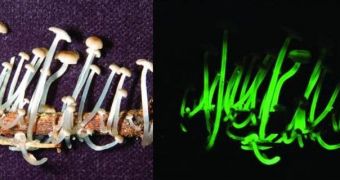“Glow-in-the-dark,” or luminescent, mushrooms are nothing new. They can be seen in forests around the world, illuminating their surroundings with a faint glow. But, in an important, new expedition, experts have recently identified seven new species of aglow mushrooms. This could help botanists better understand the emergence and development of the phenomenon known as natural luminescence, which scientists have tried, but failed, to replicate, LiveScience reports.
More than three quarters of glowing-mushroom species belong to the genus Mycena, which lives on decomposing organic matter. They emit light naturally, and some species even do so during the day. However, the glow is fairly dim, and cannot be viewed when the Sun is out.
“If daylight was not so bright you could see them during the day, but the greenish-yellow light does not stand out against daylight so we cannot visualize them. But take them into a dark room at any time of day, and wait until your eyes adjust to the darkness, and you'll see them glow very nicely,” San Francisco State University (SFSU) expert Dennis Desjardin, the lead researcher on the new investigation, says.
The new species were identified in all corners of the world, the experts report, from Belize, Brazil, and the Dominican Republic, to Jamaica, Japan, Malaysia and Puerto Rico. They glow 24 hours a day, but can only be seen on dark nights, preferably when the Moon is covered by clouds. “What interests us is that within Mycena, the luminescent species come from 16 different lineages, which suggests that luminescence evolved at a single point and some species later lost the ability to glow,” the expert says.
Two structures, the luciferin-luciferase-mediated complex, is known to emit light in the presence of oxygen and water in glowing bacteria and other luminescent organisms, but the exact chemical reactions underlying this process have remained hidden from researchers. The US National Science Foundation (NSF) and the National Geographic Society provided the funding for the new investigation.

 14 DAY TRIAL //
14 DAY TRIAL //